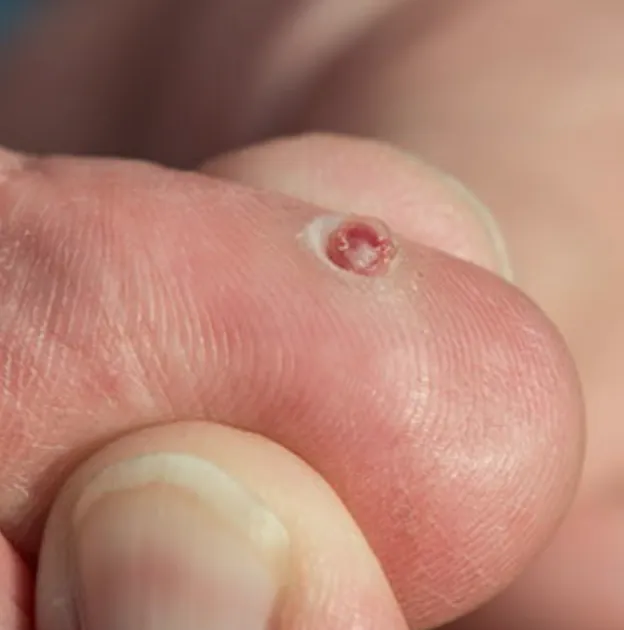St. Pete Location
Bradenton Location
Patient Education
We're passionate about helping people achieve their healthiest, happiest skin. Whether you're struggling with acne, eczema, rosacea, or any other skin concern, we're here to offer support, information, and inspiration.

Manage Your Bumps: Effective Pyogenic Granuloma Solutions | My Skin
Calm the Red Lump: Effective Treatments for Pyogenic Granuloma
A frequent benign skin growth that looks like a little red or purple lump is called a pyrogenic granuloma. Despite its name, it isn't infectious and doesn't involve pus. These growths may appear unexpectedly, spread quickly, and bleed readily.

What is Pyogenic Granuloma?
Pyogenic Granuloma, alternatively referred to as lobular capillary hemangioma, is a cutaneous blood vessel growth that is not malignant. It is not a real granuloma and is not bacterially-induced, despite its name. Usually appearing as tiny, reddish-purple pimples, these growths can bleed readily when inflamed.
Symptoms of Pyogenic Granuloma
Pyogenic granulomas are often diagnosed as tiny, red or purple skin lumps that grow quickly and have a propensity to ooze or bleed when irritated. Affected areas may also occasionally hurt or become painful for certain people. All of these symptoms indicate pyogenic granuloma, and people may be advised to contact a doctor for more testing and counselling.
Causes of Pyogenic Granuloma:
Although the precise cause of pyogenic granuloma is unknown, small skin trauma or injuries, such as scratches or bug bites, are frequently the trigger for this condition. Pyogenic granulomas are also called "pregnancy tumours" because of the hormone changes that occur during pregnancy. Underlying medical disorders and certain drugs may also contribute to the development of these tumours.
Addressing Pyogenic Granuloma
Pyogenic granuloma treatment often involves removing the growth, which can be done in a few different ways. Surgical excision, electrocautery (burning), cryotherapy (freezing), laser therapy, and topical drug delivery are some of these techniques. The size, location, and other characteristics of the granuloma, together with the patient's preferences and general health, all influence the therapy option. All approaches seek to eradicate the growth as much as possible while reducing the possibility of a recurrence and encouraging the best possible healing of the afflicted area.
Peace of Mind & Healthy Skin: Find Your Pyogenic Granuloma Answers in St. Pete & Bradenton
If you suspect a Pyogenic Granuloma, consult a dermatologist in St. Pete or Bradenton. They can provide an accurate diagnosis and recommend the best course of action for your specific case. Remember, with proper care, you can effectively manage this condition and maintain healthy, beautiful skin.
Disclaimer:
The information on this website is provided for educational and information purposes only and is not medical advice. Always consult with a licensed medical provider and follow their recommendations regardless of what you read on this website. If you think you are having a medical emergency, dial 911 or go to the nearest emergency room. Links to other third-party websites are provided for your convenience only. If you decide to access any of the third-party websites, you do so entirely at your own risk and subject to the terms of use for those websites. Neither My Skin by Leah Michel, APRN, FNP-BC, nor any contributor to this website, makes any representation, express or implied, regarding the information provided on this website or any information you may access on a third-party website using a link. Use of this website does not establish a doctor-patient relationship. If you would like to request an appointment with a health care provider, please call our office at (727) 295-7223.
If you have any questions or concerns about your skin & would like to schedule an appointment at our St. Pete dermatology office or Brandenton dermatology office, please call us today!
St. Pete Location
111 2nd Ave NE., Suite 1406
St Petersburg, FL 33701
Plaza Tower- Downtown St Pete
Phone: (727) 295-7223
Bradenton Location
4301 32nd St. W., Suite D2
Bradenton, FL 34277
Phone: (941) 330-5805






